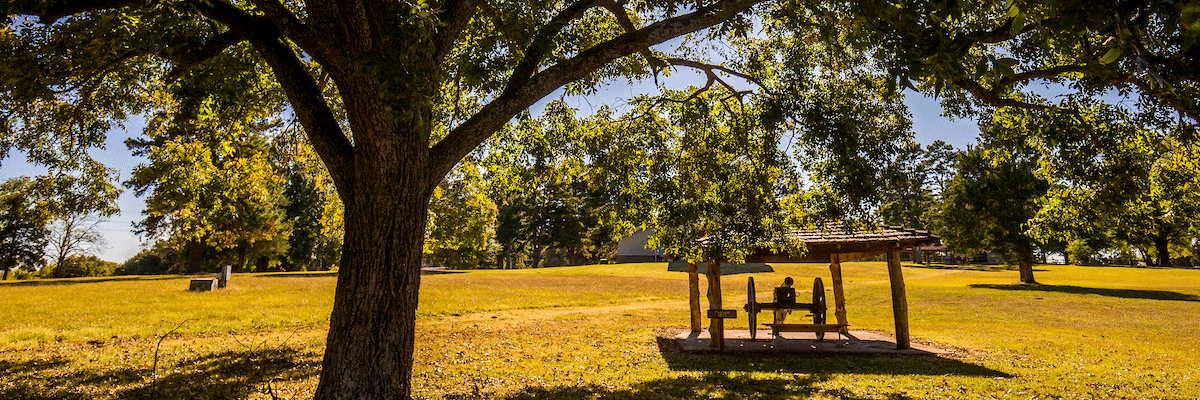
Home | Visit | Fort Towson Historic Site | Timeline
Fort Towson Timeline
- May 1824
- As a result of the Treaty of Doak’s Stand, the US government agreed to provide military protection to the Choctaws from the Plains Indians and white settlers. A military outpost was established at a strategic location on Gates Creek, Indian Territory. Cantonment Towson was named in honor of Nathan Towson, Paymaster General, US Army.
- Early 1829
- Cantonment Towson was abandoned by the military and the log structures were burned by white settlers claiming the area as part of Arkansas.
- 1830
- Reestablished as Camp Phoenix after the Treaty of Dancing Rabbit Creek provided for the removal of the Choctaws to Indian Territory. One year later it was renamed Fort Towson. More than 12,000 Choctaws eventually move into the region.
- 1830–36
- Connected to the East by road, Fort Towson served as a gateway for settlers bound for the Republic of Texas. Notables passing through the area included Sam Houston, Davy Crockett, and Stephen F. Austin.
- 1842
- As the army reinforced its southwestern forts due to instability with Mexico, a reconstruction campaign replaced log structures with stone and plank buildings. New buildings were built of locally quarried limestone and walnut logs sided over with plank boards.
- 1846
- Fort Towson was an important staging area for US forces during the Mexican-American War of 1846–47.
- 1854
- As the frontier moved further west, Fort Towson’s role in maintaining peace on the frontier was no longer necessary. Officially abandoned by the army in 1854, the remaining buildings were utilized by the Choctaw Nation as its tribal agency.
- 1863
- Confederate forces occupied the fort during the Civil War. Fort Towson served as the headquarters for General Sam Bell Maxey, commander the of Confederate Army in Indian Territory.
- June 1865
- Fort Towson served as a dispersal point for Confederate veterans, bringing its military role to a close.





